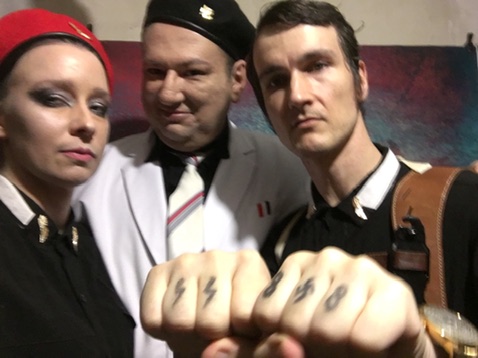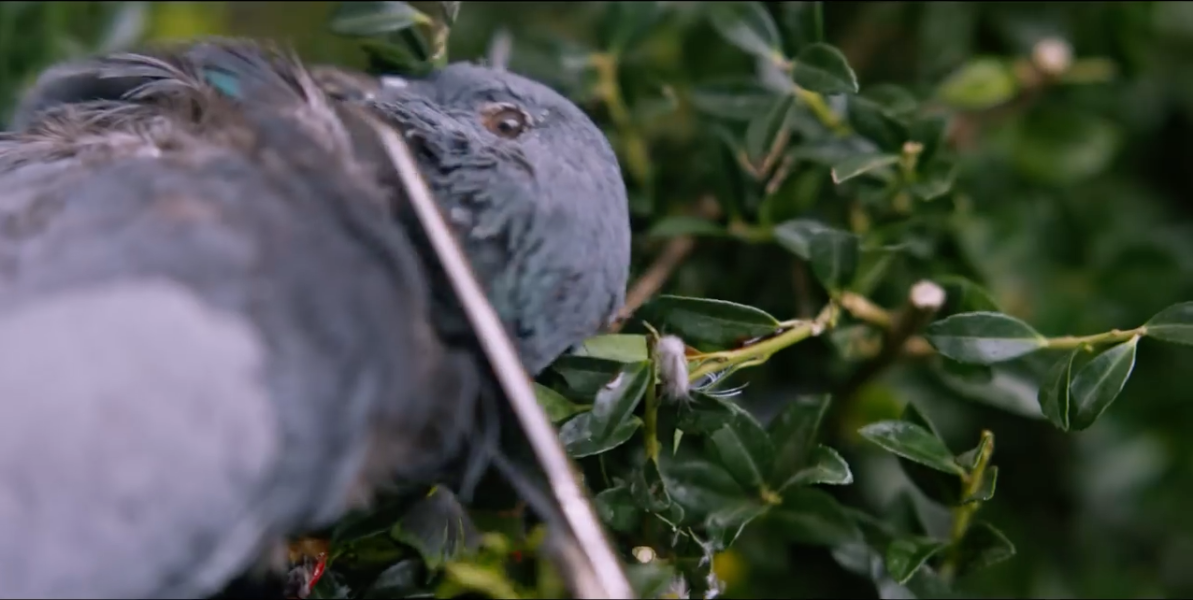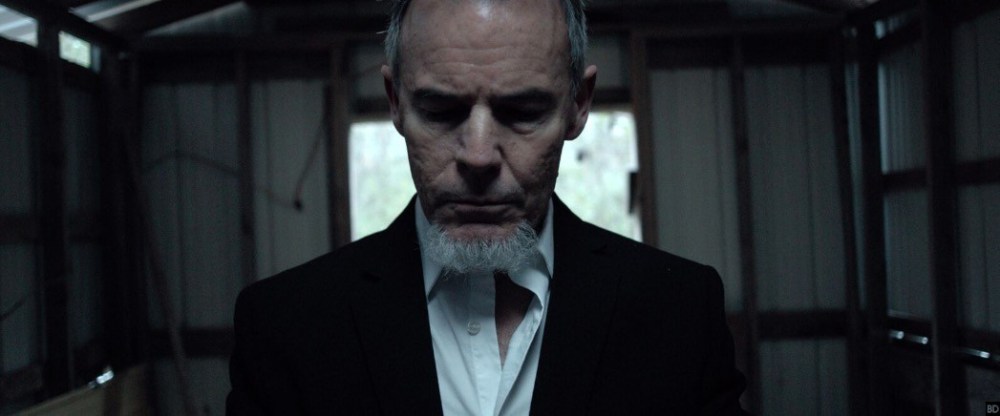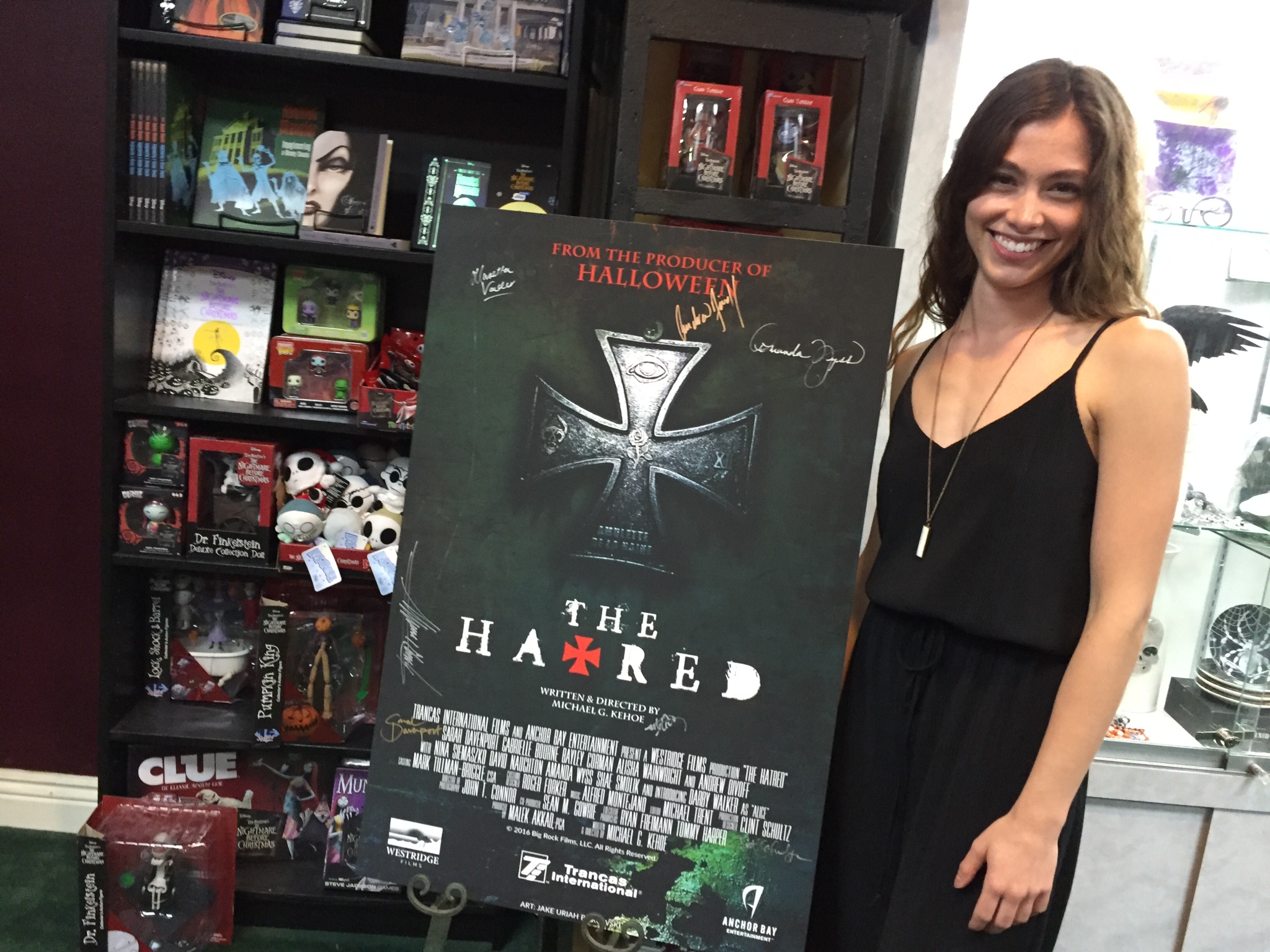
There are some places I have visited that make me feel more at home than my actual home. Khabarovsk, Russia is not one of those places.
To put it another way, there’s an old Soviet-era joke related to me by Andrey himself:
An old sinner finds himself close to death and is worried about his eternal afterlife. He asks Archangel Michael to show him Heaven. St. Michael obliges. Heaven is a serene and beautiful place, but the old man finds it to be rather bland.
The old man asks Satan to show him Hell. Satan obliges and gives him a tour of hell. It’s a raucous place full of parties, sluts, and booze. The old man says, “This is exactly where I want to go when I die!”
The old man dies a short time later, and goes to hell as he requested. But instead of wild parties, he’s greeted only by demons and the damned being boiled in oil. Of course he’s outraged. He asks Satan, “What’s the meaning of this? This isn’t what you showed me!”
Satan responds, “My dear, tourism is one thing. Immigration is another thing entirely.”
So it was for me during my visit to the city of Khabarovsk, located in the far eastern edge of Russia, near the border to China. If you visit as a tourist and stay in a hotel such as Intourist or Enigma, you will enjoy a comfortable or even luxurious stay at reasonable rates. Shopping and restaurant dining are also very affordable and generally high quality. Your US dollars can buy a lot of great things at a low price, and I recommend the Khabarovsk tourist experience for that reason alone. I spent far less money during my three weeks in Khabarovsk than in a few days in Los Angeles. The language barrier was a bit jarring, given that the most of the shops cater not only to Russian locals, but also to Chinese and sometimes Korean tourists, but rarely to English-speaking tourists. History buffs will find a lot of value as well. There are many fascinating Soviet-era monuments and historical buildings, as well as great museums in central Khabarovsk. It’s not a common city for American tourists to visit, but you will probably have a good time if you do.

But if you really want to understand the experience of the “average” Khabarovsk citizen in general, or understand what influences Andrey Iskanov’s films in particular, you must venture outside of the tourist districts. Andrey’s apartment complex, and many others, are what U.S. citizens would consider ghetto conditions, in cockroach-infested Soviet-era flats in various states of disrepair. Feral cats and wild dogs roam the streets. The locals seem cold and unfriendly, and rarely smile—a trait I learned is common among people of the former USSR. The tap water is generally considered unsafe to drink without being boiled first, and no matter how often I bathe, the funky water makes me stink within an hour. After my first week in Khabarovsk, I’m not so bothered by the language barrier and culture shock as I am by constantly sweating and smelling bad.
Andrey’s flat is no exception. He has lived in the same building most of his life, initially living with his mother and grandmother before moving to a separate flat in the same building over 20 years ago. His one-room flat is clean but cramped with many film props. His kitchen sink faucets are broken, so he is forced to wash his dishes in his small bathroom. He sleeps on a crude wooden bed with no mattress. He seems somewhat proud to tell me that he filmed 90% of the Unit 731 scenes for Philosphy of a Knife on his bed, and then sarcastically adds, “you can see how much money my American distributor put into my films.”

Andrey is referring to his former distributor Unearthed Films. Andrey alleges that Unearthed’s owner, Stephen Biro, never paid him the 75% royalties owed for the sale of over 9,000 copies sold of multi-disc edition of Philosophy of a Knife, which I estimated to be well over $100,000 USD in profits for Andrey, excluding royalties from later prints of the one-disc edition. In various podcast interviews and in online forums, Stephen Biro has emphatically stated he doesn’t owe Andrey any payments for Philosophy, and has characterized Andrey as “difficult” and even “crazy as fuck.” The disagreements between the two escalated online until Andrey blocked everyone in Stephen Biro’s friends list on social media, which surely didn’t help dispel Andrey’s reputation for being difficult.
The issue of whether or not Andrey is still owed royalties from Philosophy will never be objectively proven without both parties disclosing financial records. However, having seen firsthand how Andrey lives and knowing the buying power of U.S. dollars, I can’t imagine that he ever received such a large sum from Philosophy or any of his films. Andrey doesn’t even have expensive vices. He doesn’t use drugs or smoke cigarettes, and very rarely drinks alcoholic beverages. Almost all of his disposable income—when he has it—goes directly toward his films.
During my nearly month-long stay with Andrey, I failed to see anything indicating that he is “crazy,” dangerous, or otherwise unstable. In fact, he was extremely kind, funny, and generous with the limited resources he had, and went out of his way to make me as comfortable as possible. This isn’t to say that Andrey isn’t eccentric or doesn’t hold views that are contentious, unpopular, or just…difficult.
Regarding filmmaking: “All filmmaking is an act of magic. Unless it’s a Marvel movie.”
Regarding the Lord of The Rings series: “I hate Hobbits. Just fucking hate them.”
Regarding spiritual practices: “Horror movie soundtracks are the best music for meditation.”
Regarding other “extreme” horror films: “Fuck Men Behind the Sun and fuck those Italian cannibal films. I hate animal cruelty.”
Regarding great literature: “War and Peace is a shit novel…What? Even Tolstoy said so.” (Fun fact: Andrey was named after a character in War and Peace.)
Andrey even has a complicated and ambivalent relationship with his own work. For example, he railed against Dread Central’s 0 out of 5 star review of Philosophy of a Knife, referring to the reviewer as an “anacephalic fetus” for criticizing the historical accuracy of the film. Andrey says, “The reviewer says it’s ridiculous that the female prisoners have shaved pubic hair and wear makeup. If he did any research, he would know that it was standard procedure in prison camps to shave prisoner’s pubic hair to prevent lice, and officers sometimes gave cosmetics and other gifts to female prisoners they liked.” It should also be noted that Khabarovsk was the site of the Unit 731 trial, and Andrey has read all the trial transcripts and all available documents of the Unit’s activities, so he’s definitely immersed in the history of Unit 731.
In a subsequent conversation, I mentioned that my university’s Film Studies professor was familiar with his work, and didn’t like Philosophy of a Knife at all. Andrey shrugged and said, “That makes two of us.” He went on to explain that he regrets some of the extreme elements of the film, and he especially dislikes scenes involving rape and humiliation of women. If he could make the film over again, he would rather focus less on torture and more on the Stockholm Syndrome romance between the Japanese Officer and the young female prisoner.
Andrey also regrets the reputation he has gained as an “extreme filmmaker” since making Philosophy of a Knife. Indeed, as much as I appreciate the film, it did create a misleading impression of Andrey as a person, until I got to know him better. The disparity was even more pronounced in person. One might expect Andrey’s apartment to be full of extreme horror films, deviant pornography, and real death photos. His interests and influences are actually very diverse. The few “extreme horror” films in his collection were autographed gifts from other filmmakers, including Fred Vogel and Ryan Nicholson. (“He wanted to make a movie with me,” said Andrey of Nicholson, who had recently died of brain cancer. “It will never happen now.”) His favorite and most influential films are from diverse genres, including Westerns, Science Fiction, and the Film Noir films of the 1940s. The most surprising influence upon his own work is in fact the music video for ABBA’s “Money, Money, Money” which was popular on Soviet television in the 1980s due to its anti-capitalist themes. Andrey explained that the red and blue lights in the music video inspired his own use of multicolored lights. Likewise, Andrey appreciates almost all styles of music, and he enjoys books on many subjects, including history, art, and the occult.
At this point I would be remiss for not providing some backstory as to how I came to work with Andrey. I saw Philosophy of a Knife in 2008, and it gave me recurring nightmares. I found Andrey in Facebook in 2014. We started chatting off and on for the next few years, and then found that we have a freakish number of personal things in common. Last year, Andrey offered me a part in his film Breaking Uroboros, and I simply couldn’t refuse. So I filled out my Russian visa application and was approved in time for an October visit.
It was my first international trip, and my layover in Beijing was unexpectedly difficult due to their overly stringent security protocols. I had planned to use my stopover in Beijing to shower, change clothes, and catch a nap in a sleep pod, but instead I barely made my flight to Khabarovsk. I arrived in Khabarovsk extremely sleep deprived and filthy. It was a relief to see Andrey and his assistant Svyatoslav Iliyasov (“Slava” to his friends) were waiting for me at the Khabarovsk airport. Andrey gave me a big hug, said, “you look like you escaped a Chinese prison camp,” and presented me with rose-scented bath salts and a bag a Kotex. Andrey is unexpectedly wholesome in person. Andrey and Slava helped me check into the Intourist Hotel, which is historically significant because it was the only hotel in Khabarovsk for visitors from Western countries. Perhaps most notably, Akira Kurosawa stayed there during the filming of his Academy Award-winning epic Dersu Uzala.

Over the next few days, Andrey and Slava took me out on a tour of the many historical sites of the city, and then we prepared for filming. I’ve read some comments from horror fans online wondering why it takes Andrey so long to finish his movies. I have firsthand insight. First, he has very little money and basically creates something from nothing. Second, he has only one assistant, Slava, who isn’t always available to shoot. Third, Andrey is a perfectionist and will potentially spend days shooting five minutes worth of footage, even for scenes that don’t require extensive special effects. Scenes that do require special effects may take three months to film. And then there’s his painstakingly long editing process. Fourth, Andrey’s scenes take a long time to shoot because of incompetent “actors” like me. I ruined countless otherwise good takes because I would think of a blooper from a previous take, and erupt into gales of laughter for the next ten takes. Andrey was a good sport about it, and very professional on the set.
When we weren’t actively filming scenes for Breaking Uruboros, Andrey’s typical day involves editing footage, gathering resources and sound effects for his films, composing soundtrack music, and mundane daily tasks including checking in on his mother (who is disabled), and playing with his cat. Anyone who has followed Andrey and his work knows he loves animals, especially cats. During our long conversations, I found out that he personally rescued dozens of cats, and had 20 cats living in his apartment at one point. For someone who creates such brutal films, Andrey is a softie.


With so many apparent incongruities between the nature of Andrey’s films and Andrey himself, I believe it’s best to let Andrey explain things in his own words. In the near future, I will be following up with an exclusive interview with Andrey, conducted over the course of several weeks.
In the meantime, please support Andrey’s work by renting or buying his films on Amazon Video, buying his films on DVD from Last Exit Entertainment or Spasmo Video, donating to his GoFundMe page, or becoming his Patreon supporter.




























